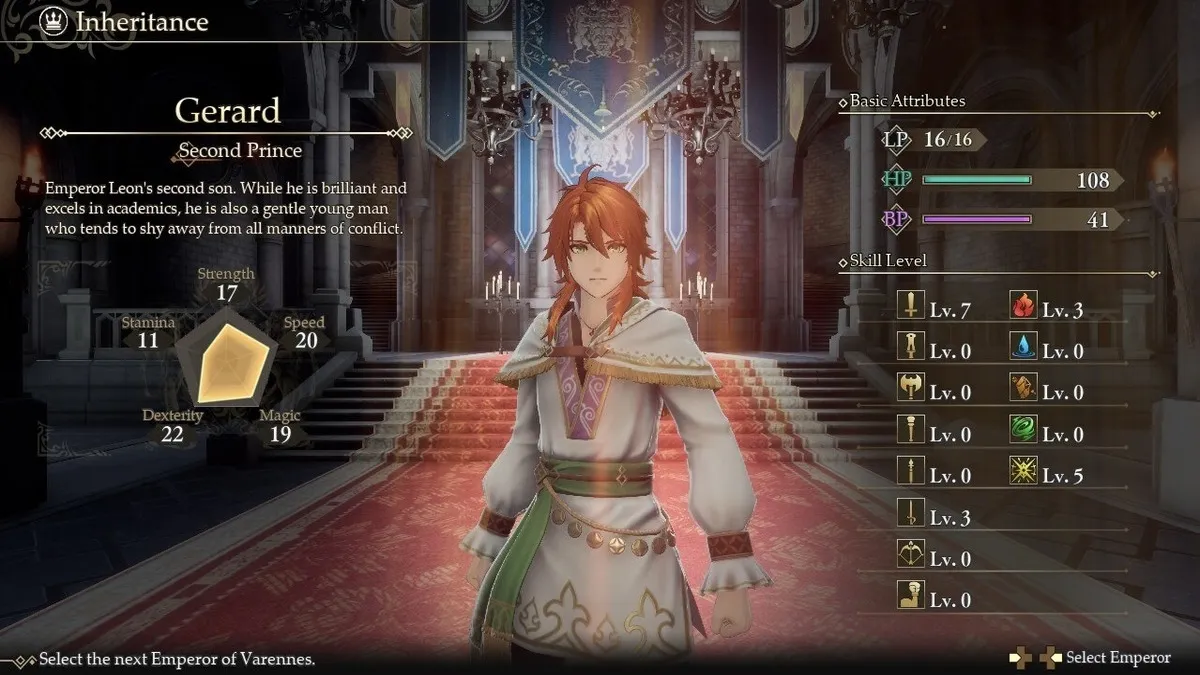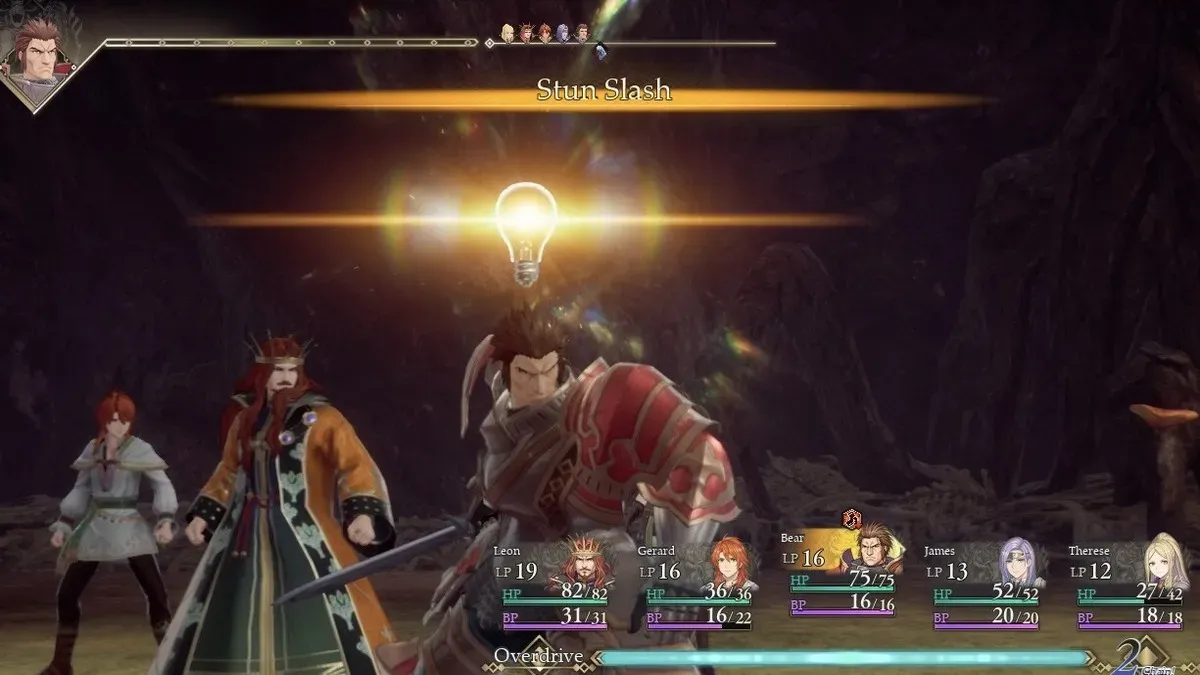Even though I have a deep passion for JRPGs and have played nearly all the major titles that have been released recently, one particular franchise has always eluded my interest: SaGa. While I acknowledge the unique non-linear gameplay and the various characters featured in these games, each installment I tried ultimately failed to captivate me. That is, until I experienced Romancing SaGa 2: Revenge of the Seven, which finally opened my eyes to the appeal of this series.
I first encountered the original Romancing SaGa 2 on the Switch, but it quickly failed to hold my attention. Thankfully, this remake feels like an invitation aimed at newcomers and indifferent JRPG enthusiasts like me, while simultaneously celebrating long-time fans of SaGa. The essence of the gameplay remains consistent with the original, but it now boasts a vibrant 3D refresh along with several essential quality-of-life enhancements.

You won’t need to play any previous SaGa titles to dive into this non-linear adventure. The narrative begins with seven distinctive heroes who once (or so it’s said) saved the world but are now involved in rather unheroic actions. Following a somewhat linear prologue, you’re free to pursue your path as you work to build an empire that will eventually take down these fallen heroes in any order you desire.
A significant aspect of this JRPG lies in its notable emphasis on player agency. Almost every element of the game is driven by your choices. With a few exceptions, you determine which hero to confront and in what sequence. You also have the power to designate your emperor and personalize the capital city of Avalon according to your preferences.
Romancing SaGa 2: Revenge of the Seven stands out from every other JRPG I’ve engaged in, including its fellow titles from Square Enix. It truly embodies a fantasy epic. Do not anticipate a conventional story centered on a linear band of heroes saving the day; instead, this installment guides you through a saga that unfolds over several millennia with an array of heroes and their journeys.

A core theme within this game is the permadeath feature, which might be the most compelling element for me. Every character possesses standard HP, BP (akin to mana), and unique skills during combat. However, if a character’s HP drops to zero, they also lose a life point, or LP. Once their LP hits zero—a very rare occurrence to replenish—they’re gone for good. This rule applies even to the emperor you control.
That being said, losing a character does not signal an automatic “game over” as is common in many JRPGs. Should your emperor perish, the narrative simply continues. You transition to the next generation of your ruling line and select a new successor, who inherits the abilities and powers of the fallen emperor. This system encourages you to embrace loss and pass through generations, enhancing gameplay depth.
However, I must admit, this feature occasionally creates a sense of detachment in Romancing SaGa 2: Revenge of the Seven. Aside from a few pivotal characters, I struggled to form any significant connections. Knowing that any character could potentially die at any moment left me reluctant to become emotionally invested in individual party members or rulers.
This trade-off characterizes the game’s commitment to player choice. The overarching storyline, accordingly, feels rather basic and unremarkable. This could be a deliberate design decision to prioritize player-driven storytelling. Although I appreciated the solid English voice acting, it didn’t significantly enhance the overall experience.

If you are seeking a JRPG rich in character development and intricate plots, this may not be the right choice for you. However, if you’re in search of a game offering quirky features not found in other titles, I wholeheartedly recommend giving it a chance. This extends to the combat system as well, which stands out as my favorite in the SaGa series to date. It is quick-paced yet visually impressive, brimming with various skills.
Players can explore around 30 different character classes throughout their journey, along with numerous weapon types. One character might wield a bow and spear, complemented by fire spells, while another could be heavily armored with a shield and provide healing support. The game also deviates from traditional level-up methods.
Characters enhance their skills naturally as you engage in battles. You’ll notice a golden exclamation mark next to an action, indicating skill usage, such as attacks with a spear. Repeatedly using these skills can randomly unlock new abilities, adding an element of surprise to character development. Be mindful, though, as the game implements a resistance and weakness system. Curiously, the setup is reminiscent of Square Enix’s Octopath Traveler, particularly in its enemy bar presentation, albeit with distinct gameplay mechanics.
The challenge level strikes a balance, never feeling overly tedious despite the absence of conventional leveling. You not only gain skills mid-combat but also enhance attributes like HP through continuous fighting. Leveling progresses based on the specific weapon or magic type you utilized rather than following a standard character level, which I find reminiscent of Final Fantasy II’s progression system, allowing you to develop the facets of your characters that truly matter.

The combat system also introduces exciting features like United Attacks, akin to Limit Breaks, which accumulate energy over time and enable players to unleash extraordinarily powerful moves, ideally suited against formidable opposition. Additionally, the quality-of-life improvements in dungeons, such as combat acceleration, auto-battle options, and fast travel points, greatly enhance the overall experience.
On top of the foundational gameplay, there is a surprising amount of content—both returning and fresh. Players can engage in a city-building mechanic, unlocking and upgrading structures like shops throughout the generations. You can also participate in entertaining mini-exams at the university, reminiscent of Yakuza: Like a Dragon for unique rewards. Furthermore, players can discover scattered memories as collectibles around the world, offering valuable context about the seven heroes and their quest for vengeance.
All these elements intertwine to create the first Romancing SaGa title that I managed to complete and genuinely enjoy. Romancing SaGa 2: Revenge of the Seven is a standout JRPG in a year brimming with them, deserving of your attention. Whether you’re a newcomer to the series or a seasoned veteran, there’s plenty to appreciate. While the colorful 3D graphics are pleasing, they aren’t particularly groundbreaking, and the game may lack the detailed characters and complex stories found in other JRPGs. Nonetheless, it compensates for this with a remarkable focus on player choice that delivers a uniquely rewarding and memorable experience.
Romancing SaGa 2: Revenge of the Seven launches on October 24, 2024, for Nintendo Switch, PS4, PS5, and PC.




Leave a Reply